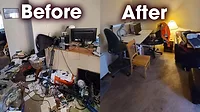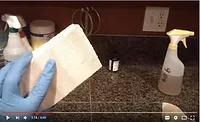Case Study: Fire in a Hoarded Home
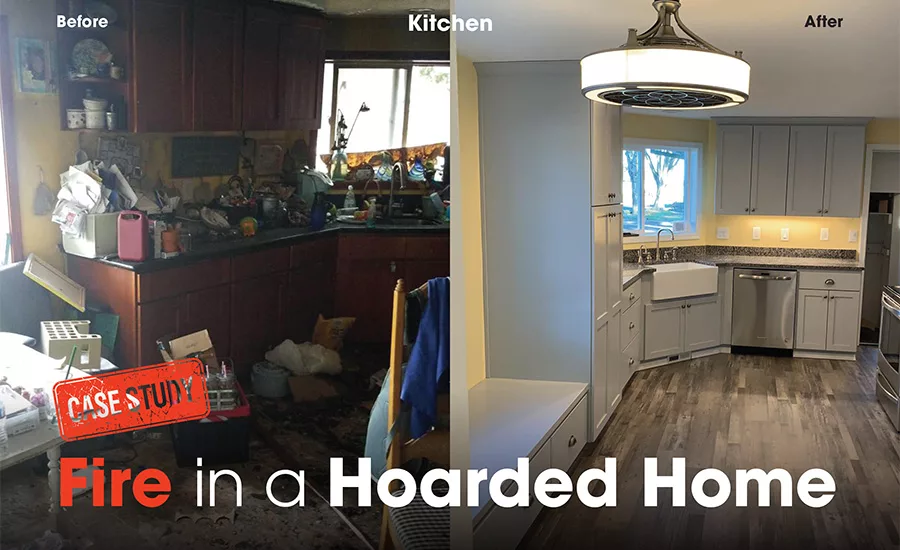
Photos courtesy of PuroClean Restoration Services of Portland, Ore.
When you think about hoarding, there is an array of risks and dangers that come to mind – from cleanliness to injuries to air quality. Unfortunately, there’s another less obvious danger and hidden risk that causes both property damage and a lot of heartache for those involved. Fire.
When the initial call for a new fire and smoke job came in, our team was unaware we would also be dealing with a hoarding issue. What was assumed to be a relatively routine job suddenly turned into a massive undertaking. Over the course of several months, our team was able to declutter, disinfect, repair, and reconstruct the home to restore it into a welcoming and comfortable environment. But the process wasn’t without its hurdles.
Assessing the Situation
All jobs begin with an initial walkthrough to assess the full amount of damage, as well as analyze any safety concerns for the crew and client. A hoarding job is guaranteed to have various contaminants, so a walkthrough is critical, providing information on what sort of protective gear must be worn and what specific cleaning supplies are needed.
When the team first entered the house, it was clear the fire started in the kitchen, and that was the area with the most extensive damage. But, upon further inspection, smoke and soot damage was found throughout the entire home.
When they reached the basement, they realized it was filled floor-to-ceiling with contents, all of which had smoke damage. In order to complete the insurance claim, the basement needed to be cleared, and each item needed to be cataloged.
Step one: set up a staging and disposal area to begin sorting the content.
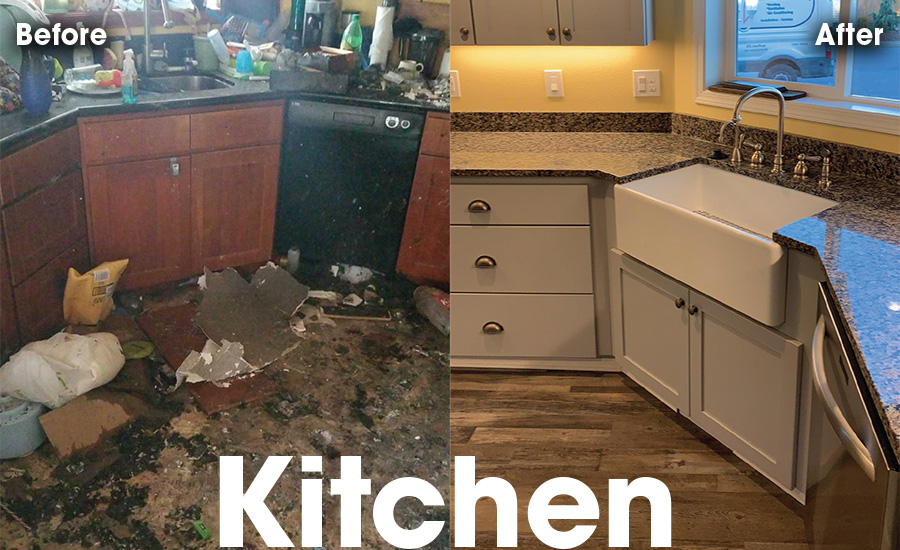
Thoughtful Sorting
For our team, one of the most important aspects of working on a hoarding job is ensuring the team is in constant communication with the homeowner. In most cases, they suggest a family member or close friend be involved in the cleaning process, due to the emotional and psychological aspects involved. The team works diligently to ensure they do not create a situation where the homeowner feels like they aren’t in control because that can often make hoarding tendencies worsen.
It’s about helping the person know that we are on their side and are not there to take their things away. We’re there to make sure that the house is safe for them and ensure the items they choose to keep are all safely cleaned and taken care of, setting them up for a comfortable future.
During the process, the team looks for opportunities to gently encourage the client to let some things go. It can be a slow process, but there are many techniques that can help mitigate the person’s anxiety while still getting the work done. In this specific case, our team helped the client sort through piles of scrapbooking paper, encouraging them to keep only a certain number of pages per color, as an example. This technique helped them feel in control of the situation but eliminated a significant portion of the clutter.
The entire process of packing out the house took around six weeks. During this time, the team worked with the client daily to declutter their basement, filling a 20-yard dumpster with material that was not going to be saved. One room alone contained more than 250 boxes of items that needed to be sorted, inventoried, and processed.
Because this was an insurance claim for fire loss, each item, including what was going to be thrown out, had to be inventoried. Over the course of the job, the team compiled one of the largest photo inventories they have ever done with more than 1,300 pages of cataloged content. Every item had to be given a descriptor —is it cleanable, restorable, or non-restorable?
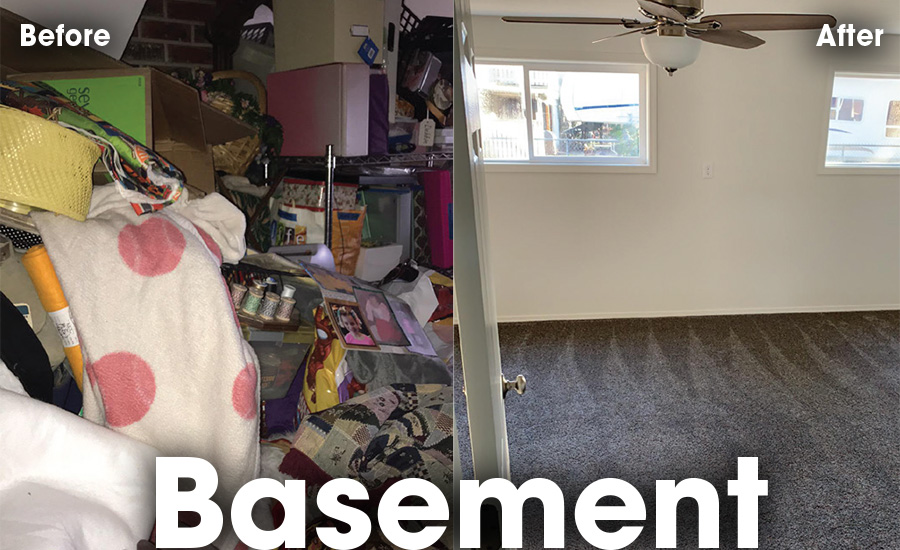
Making it Home Again
Once the home was free of clutter, the team was ready to begin the process of repairing and cleaning it. The team began demolishing the affected areas, so they could begin reconstruction.
Due to the extensive structural damage from the fire, it took three weeks to get the structure gutted, cleaned up, and deodorized. The team worked to remove anything that was non-salvageable from a structural standpoint, essentially gutting the main level of the home. Working through the house, the team cleaned and disinfected all surfaces, using a smoke odor neutralizer.
In tandem, items that were salvaged from the basement were disinfected and deodorized at our facility to be ready for delivery back to the house. Due to the high volume of content, this process took about three months.
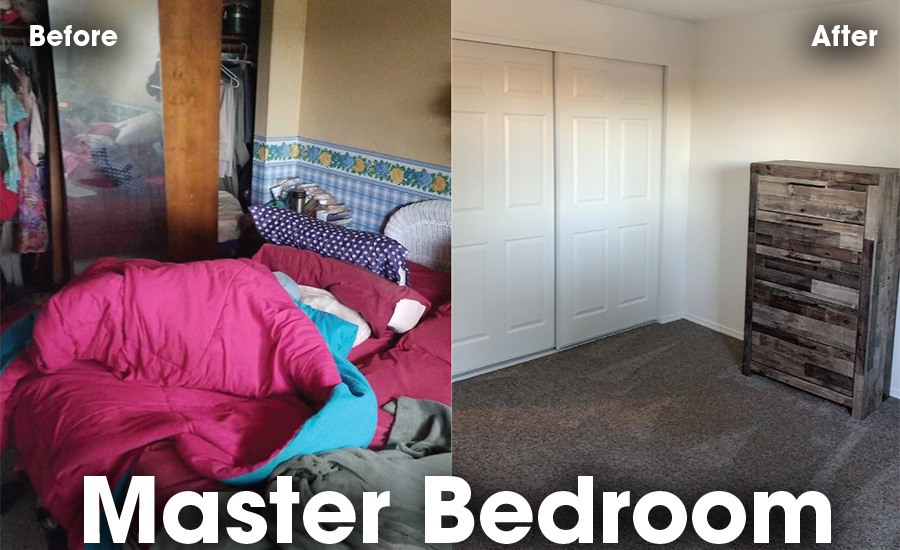
Reconstruction
After the clean-up, smoke remediation and repairs were completed, and the team was able to get started on reconstruction. The house required a full rewiring, plus HVAC and plumbing reconstruction. Also, due to water damage from extinguishing the fire, the house needed to be reinsulated.
While these repairs were being made, the homeowner requested additional updates, so new windows, doors, and trim were installed throughout the house. The team also reconstructed the kitchen, which was extensively damaged in the fire, with all new granite countertops. Once the reconstruction was complete, it looked like a completely different home.
Overall, this job took just over a year, but the family was able to use it as a new beginning. In fact, I checked in with this client just a few months ago. They are happily living in their reconstructed home and continue to work each day to live their life clutter-free.
Looking for a reprint of this article?
From high-res PDFs to custom plaques, order your copy today!




